I love both flowering plants and cut flowers — seeing them in the garden or in a vase in the house makes my little heart patter in a very good way. My garden is full of succulents, bromeliads and plants from the Mediterranean and Australia.
It certainly is not a riot of color, but the interest from foliage, form and texture sure is there. I have a few pots planted with annuals here and there and always a vase or two of flowers inside, thanks to our farmers market. I would have been a great flower child in the '60s.
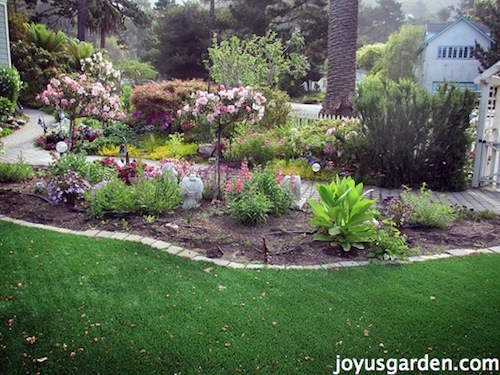
I go up to Pacifica (just south of San Francisco) twice a year to do annual color changes in a garden I've worked on for many years. Yippee … this scratches my itch for shopping for blooming plants. A trip to nurseries buying flowers is one of the most fun ways I can think of to spend an afternoon or two.
I jam-packed my car with plants, leaving just enough room to see out the mirrors, and headed north for the five-hour drive. Next, I'll lay out the steps I take to prepare and plant a bed. And, be sure to check out the video How To Prepare And Plant A Flower Bed shot in this same garden at the end of this post.
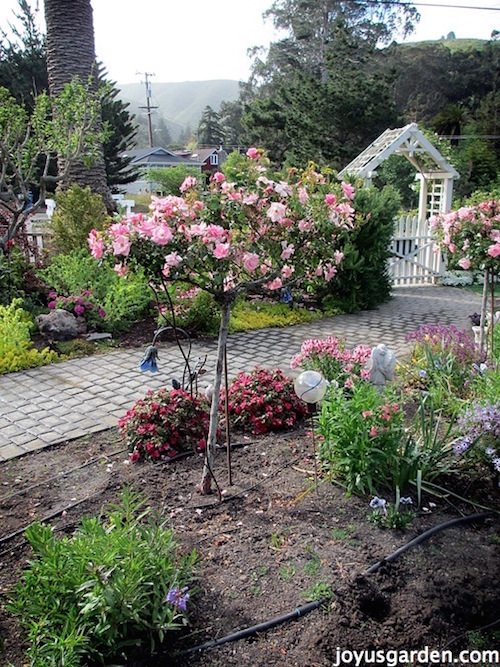
Steps to Planting:
I plan out how many plants I will need according to how wide each one grows. Because I am planting annuals in these beds, they will grow fast.
- Remove unwanted perennials and annuals from the previous season & weeds.
- Dive the remaining perennials and move them to other beds. Prune and clean up the remaining perennials & roses.
- Turn over and smooth out the soil to fill in the spaces where plants have been dug out. When planting annuals, I don't get too crazy with the digging because they don't root too deep.
- Lay out the plants. I like to plant in blocks of color — it's more restful on the eyes. The walkway bed is done in shades of pink & rose while the fairy bed is done in reds. Both are accented & tied together with accents of blue lobelia.
- In this location, the pocket gophers are plentiful. I make baskets from chicken wire to fit the root ball size.
- Dig holes & begin planting. I believe in enriching the soil with composts only, but when it comes to annuals I use fertilizer, too. The blend we use is 2 parts rose & flower food, 1 part alfalfa meal & 1 part composted chicken manure — all organic, of course. We use a tablespoon or two per plant depending on the root size. At home I plant with worm compost, but this garden has an abundance of worms so I skip it here.
- Smooth out the soil and adjust the drip irrigation tubes if necessary.
- Spread 2" of compost on top. This is a natural way to feed plants & conserve moisture. In this garden, it also hides the irrigation tubes.
- Put the garden art back in.
- The growing begins & a colorful masterpiece will evolve.
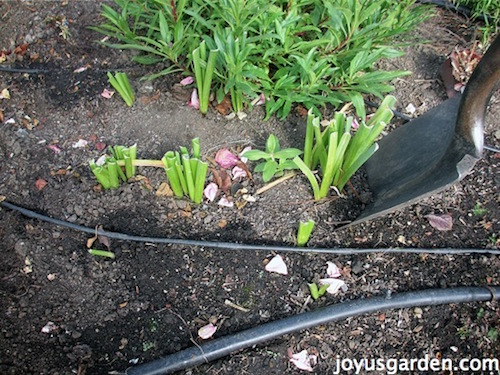
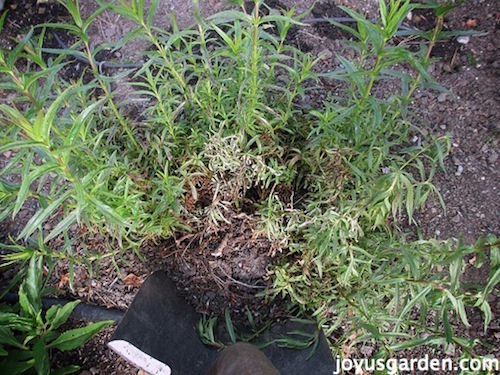
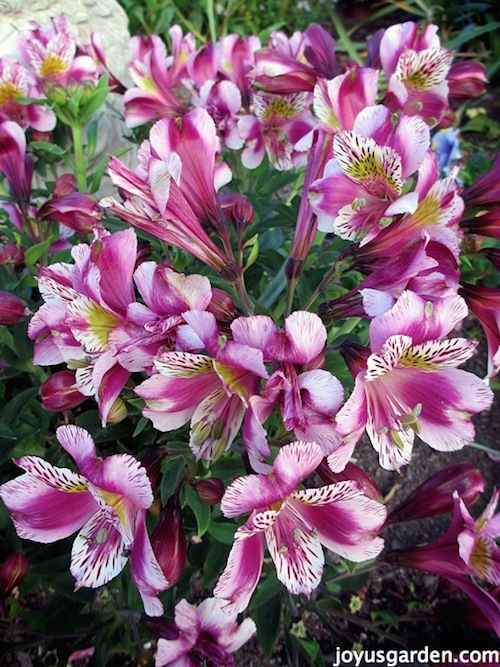
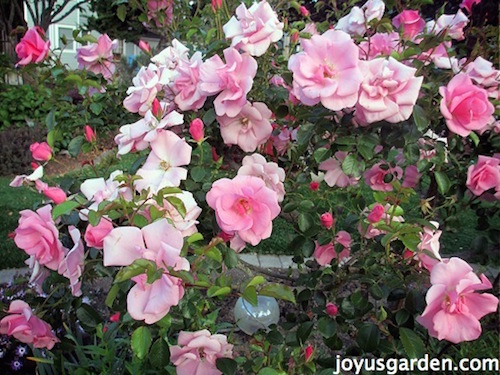
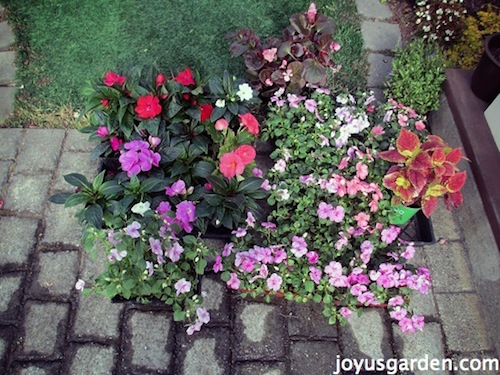
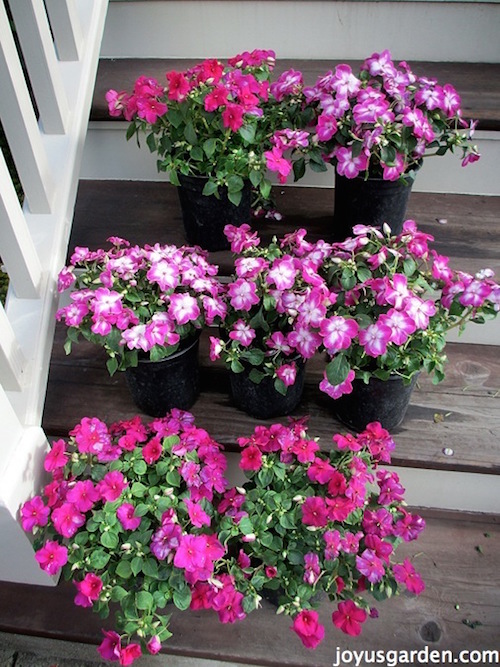
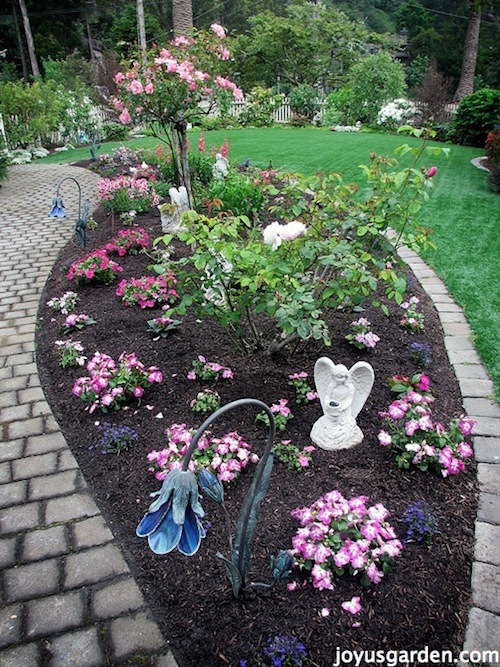
Flower beds require a little extra prep and care, but it's well worth it. Who doesn't want to add a little color to their summer world?
If you are a plant love, c'mon over to Joy Us garden where I share all gardening secrets.
More from BlogHer:
The Worst Prom Dresses of 2015
I Lie to My Daughter About My Poor Body Image
10 Reasons You Can't Afford to Stay Out of the Working Families Policy Discussion